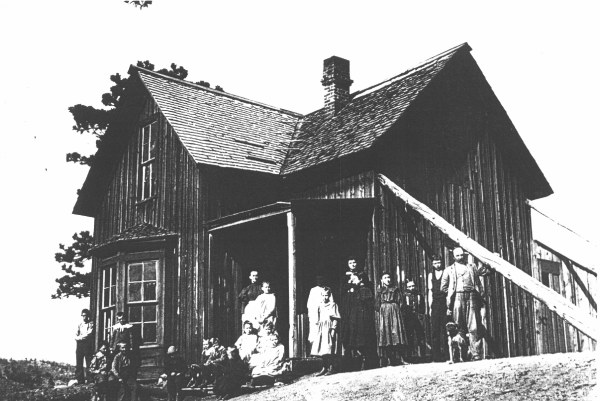


Although a large body of regulations exist for the protection of cultural resources, these regulations tend to be reactive in application, as most regulations are. Yet in order to systematically preserve and manage even the most significant of cultural resources, proactive action is called for, since without the cooperation of property owners and other interested parties, most of these resources will be lost over time. Working closely with Boulder County, PUMA is a logical entity to create proactive relationships with private property owners within the Planning Area.
A key component of a successful historic preservation program is networking with other historic preservation interests in Boulder County and the State of Colorado. These relationships should be built with the goal of having these organizations support local historic preservation with administration, funding, and volunteer services, both professional and amateur. By building these alliances, historic preservation projects in the Planning Area have a better chance of being recognized on the county and state level, and being assigned priority status for support.
Historic preservation projects in the Planning Area should always have the support, and ideally the sponsorship of appropriate Boulder County agencies. Support and sponsorship should also include at least one private non-profit historic preservation organization. Potential private support may come from Historic Boulder, Colorado Preservation, Inc., the Colorado representative to the National Trust for Historic Preservation, and the Indian Peaks Chapter of the Colorado Archaeological Society.
Funding sources available for historic preservation include Boulder County Scientific and Cultural Facilities Tax District grants, Colorado Gambling Preservation Fund, and private foundations.
The Boulder County Scientific and Cultural Facilities Tax District is administered by the Citizens Cultural Advisory Committee. This committee is appointed by the Board of County Commissioners. The commissioners also approve the grant applications. There are variable grant application deadlines, which requires regular contact with the commissioner's office, where the grant applications are available. Individual grants are generally awarded up to $2,500.
The Colorado Gambling Preservation Fund was created by the Limited Gaming Amendment to the state constitution. The fund is administered by OAHP. Emphasis is on preservation of historic buildings. Up to $200,000 in grant money is available every three months. A separate mini-grant process is available for grants of less than $2,500. Refer to the Contact List (Appendix 6.1) for the appropriate OAHP contact for grant applications.
Private funding sources include foundations that target funding for historical preservation, grants from casinos, private historic organizations, and grass roots fundraising from a large donor base.
The Forest Service may have funds available, though limited, for historic preservation projects on Forest Service lands. Approval and sponsorship should always be secured from the Forest Service for projects on these lands.
Funding for complicated projects can be arranged in a sequential manner, in order to avoid competing for the limited number of large grants. For example, the first grant for a particular preservation project can be applied to survey and analysis work, and funding obtained at a later date can be used for the restoration aspect of the project.
Oral history is an important component of any historic preservation program. Some families have three generations of residence in the Planning Area. Many of these residents are advanced in years, and there is a critical need to retain their knowledge for future generations.
 |
|
Figure 6.3 Magnolia Schoolhouse
|
Oral history interviews are not difficult to conduct, and may be done by amateurs if simple procedures are followed. It is important that at least two recording participants are present to provide "independent ears" for accurate interpretation of the information. Interviewers should be familiar with the area of residence of the interviewee. The interview is tape recorded, and should be transcribed by an independent participant. Although it can be helpful, it is not required to videotape the interview. After the interview, the interviewee should be sent a courtesy copy of the draft transcript for review and correction. The interviewee should review and sign a release form in order for the interview to pass into the public domain. Copies of the tape recording and transcript should be submitted to a library or appropriate museum. The Carnegie Library in Boulder is typically the repository of local oral histories.
In some instances, long time residents may go beyond simple oral history and develop a written history. An excellent example is the paper by William Kellogg outlining the history of the family ranch on Magnolia Road (Kellogg 1997). Including supporting documentation in these histories, such as photographs and references to reports and published information, is also helpful.
 |
 |